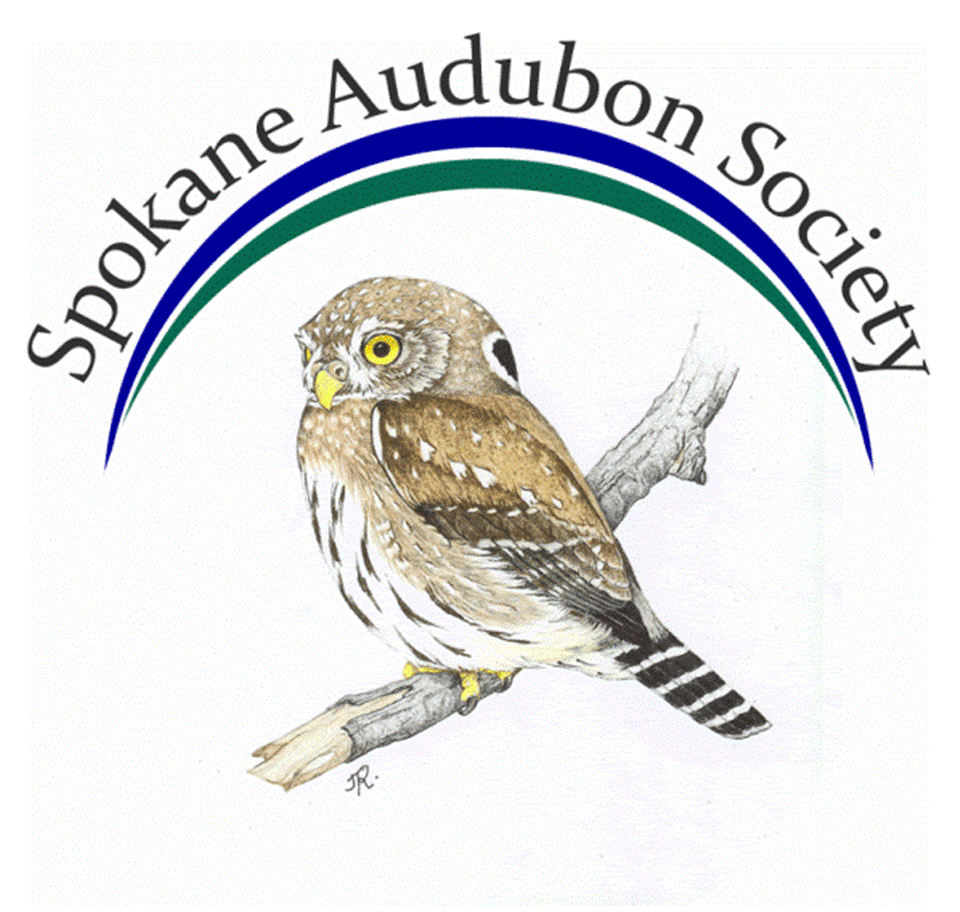Shenandoah Marr
Shenandoah Marr
by Madonna Luers
Shenandoah, our chapter’s conservation chair and first Outreach Coordinator, joined in January 2022 after participating in our Christmas Bird Count.
“I had always thought of Audubon as just a bird-watching group,” Shenandoah said. “But I learned from our chapter president Alan McCoy that Audubon is first and foremost a conservation group. I had been looking for something to do in the community that combined my interests in wildlife, forests, ecology, and environmental activism. Spokane Audubon has helped me be a part of something bigger than myself.”
Shenandoah was born in Santa Barbara, California in 1975 and has lived most of her life in California, including two summers in Sequoia National Park, and in Hawaii. She moved to Spokane in 2017 after visiting friends here and finding it full of parks and natural spaces and affordable housing. Currently employed as a Licensed Veterinary Technician Supervisor at a veterinary clinic, she holds a B.S. degree in Biology from Humboldt State University and an M.S. in Conservation Biology and Environmental Science from the University of Hawaii.
She participated in a Christmas Bird Count in Ventura County, California in 2013, but Shenandoah didn’t really get into birding until very recently.
“I have always liked birds but never bothered to learn much about any other than very common, very rare, or colorful birds,” she said, “like native Hawaiian birds, macaws, toucans, Scrub jays, Acorn woodpeckers, and California condors. I was always far more interested in reptiles, amphibians, and mammals. Getting a little older, having less time and energy, and living in a place with real winters all led me to become more enthusiastic about birds over the last year or so. My partner Dave and I installed a bird bath in our backyard right after the heat dome in 2021 because I wanted to do something to help our neighborhood wildlife. Birds and insects showed up and I started to really observe them and then I was hooked!”
Although Dave isn’t quite as committed yet as Shenandoah to seeking out birds, they recently registered their South Hill suburban property with the National Wildlife Federation as “Certified Wildlife Habitat.” Part of the criteria is providing a place for wildlife to raise young, she explained, and they watched a successful clutch of pygmy nuthatches this year.
Her favorite birding experience came this year during a camping trip in the redwood forests of Mendocino County, California. “After spending about 40 minutes looking for birds without much success, I went back to my campsite,” she recalls. “A few minutes later a Downy Woodpecker came to a tree about 15 feet away and put on a great show, boring into the branches and picking at insects. I find woodpeckers quite entertaining and it is always a joy to see them.”
She hasn’t really travelled specifically to see birds yet, but spent time birdwatching during recent travels in Australia, Ecuador, and Costa Rica with the educational organization Save The Frogs. She saw Fairy Penguins, Galahs, Sulphur-crested Cockatoos, Kookaburra, Rainbow Lorikeets and Red-tailed Black Cockatoos in Australia; Andean Cock of the Rock, toucans and hummingbirds in Ecuador; and several woodpecker and hummingbird species in Costa Rica/Osa Peninsula. “They were easier to find than the amphibians I’d traveled to see,” she said.
Shenandoah’s favorite birds are hummingbirds of all species because they remind her of her late mother. “Whenever she saw a hummingbird, even though they were fairly common in Southern California, she would excitedly call out ‘Ohhhhh, there’s a hummingbird!’,” she recalled. “Living in Spokane, where they are only here for a brief part of the year, makes seeing them even more special.”
Her tips for new birders are to be patient, don’t expect to be an expert right away, go birding as often as possible with experienced birdwatchers, and use an app such as Merlin to learn what is around at a given time of year. She said she recently observed a lot of different birds she’d never seen just around her home by using the Merlin app sound identification feature.
She believes the way to get more young people interested in birding is to make connections between birds and something they care about. “For example, if a young child is crazy about dinosaurs, have them watch some birds and explain how they are living dinosaurs.”
It’s also important for experienced birders to invite young people or birding newcomers to go with them and help them learn what is right here, she says. “It’s a great way to build enthusiasm and make birdwatching contagious!”
Shenandoah, who also belongs to the Lands Council, 350 Spokane and Spokane Zero Waste, sees habitat loss, pesticides and climate change as the most important conservation issues.
“Actions such as creating wildlife habitat on your property or in your community, reducing consumption, and composting are important because they empower us as individuals while also making a difference,” she said. “Doing small things that are within our control makes us feel like we are contributing solutions to challenges that can seem overwhelming. Larger scale actions, such as contacting our elected representatives and corporations, and responding to requests for public comments on proposed development projects, are extremely important. The more people who voice concerns over climate change, pesticide use, and loss of habitat, the more our voices will be heard, and change can happen.”







